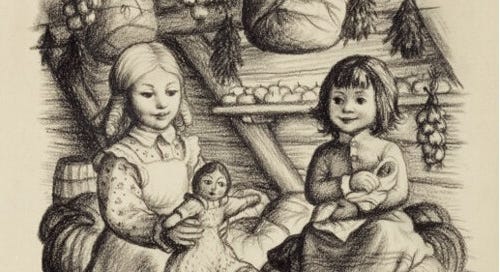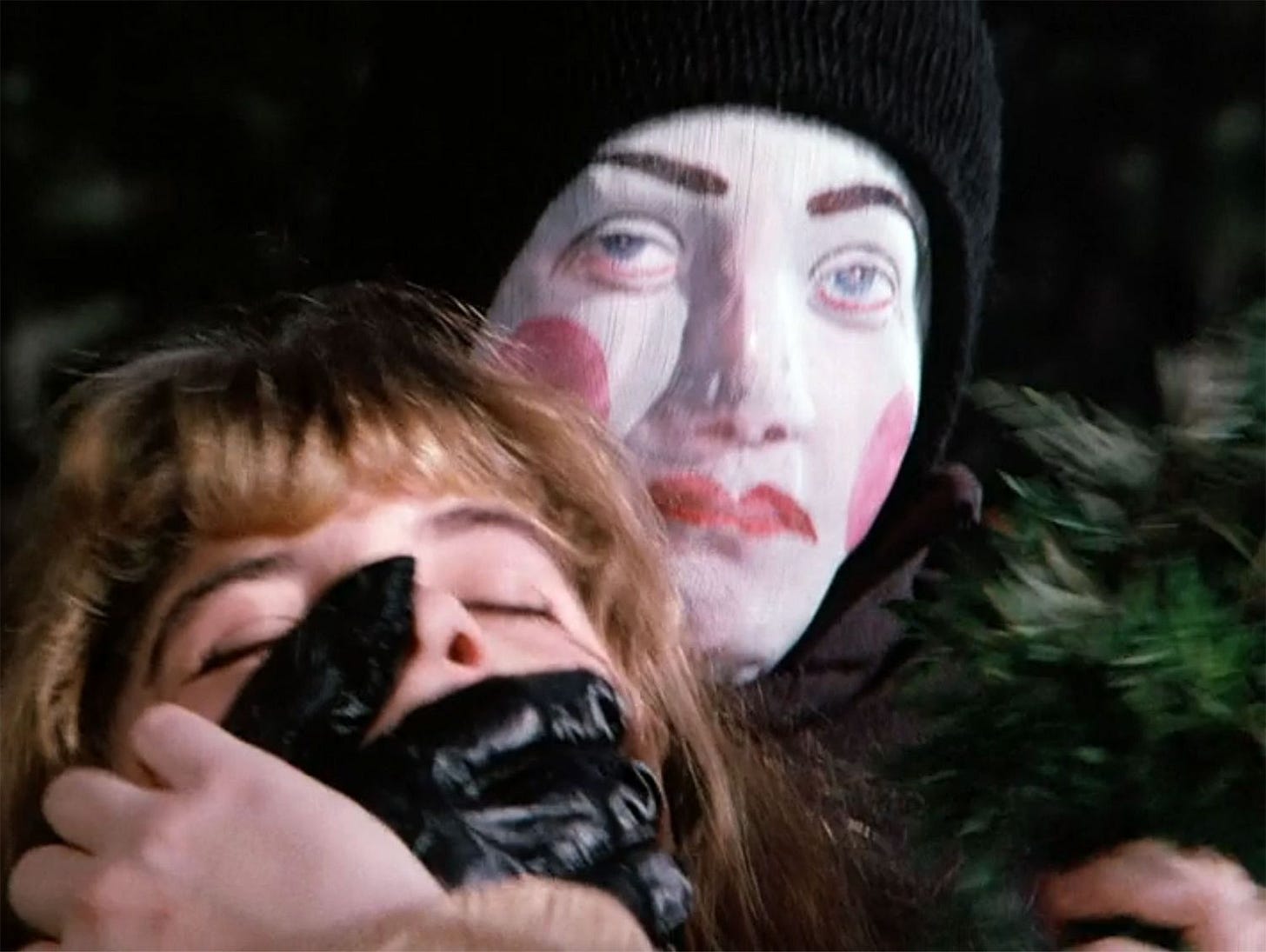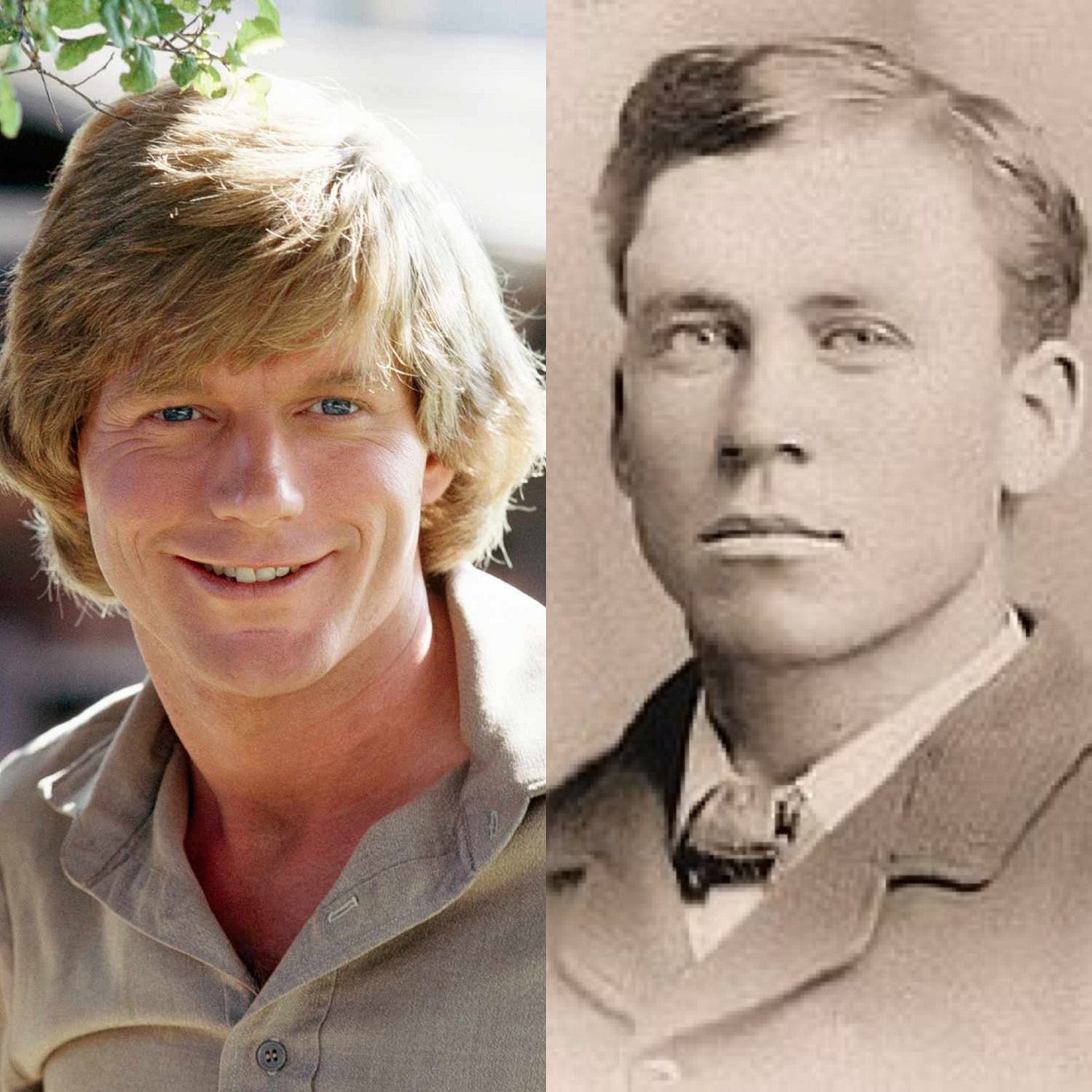Returning to the prairie as self-care
And once again reiterating how incredibly weird the Little House on the Prairie TV show was.
So, things are terrible. Well, let me clarify: things are terrible on a global scale, my everyday life is generally stable, though the future seems very grim and if I think about it too much I feel like screaming and hitting something until I can’t feel my hand anymore.
I’ve been making a concerted effort to spend less time on social media, particularly the relentless bad news (and worse takes), which since the beginning of the year feels like an elephant aimed its asshole in our direction and has never stopped shitting since. That’s a disgusting metaphor, I know, but these are disgusting times.
Working on my book (I just started the last chapter the other day!) has helped provide a distraction, as has making things with my hands. Some of it I’ve given as gifts to people, but most of it will just end up piled up in my house, but that’s okay, it’s still better than reading about how government employees will be banned from using the words “black” or “rainbow” in the office, or whatever kind of shit the elephant’s ass is going to drench us with this week.
I’ve also been reading more, both books for grown-ups, and the Little House on the Prairie series, my favorite books from childhood. I was gifted with a box set of the series when I was 7 or 81, and was immediately taken with them, and their intricately detailed recollections of 19th century life.
(here’s where I insert a disclaimer that yes, there are several aspects of the books that have aged very poorly, like Ma Ingalls’ open dislike of Native Americans, and Pa Ingalls participating in a minstrel show)
In regards to action, the most exciting the Little House books got was a couple of blizzards, and grasshoppers eating the family’s wheat crop. They were mostly just very cozy stories about Laura Ingalls’ life from age 5 up until 18, when she married Almanzo Wilder2. If you wanted action, you read Lord of the Flies, if you wanted to learn how to make maple sugar candy with fresh snow, you read Little House in the Big Woods. Interestingly, both books do involve a pig being slaughtered, however, though only Little House takes it one step further by mentioning that Laura and her sister Mary were given the pig’s bladder to play with like a balloon, a detail I would never forget even if I didn’t read the series multiple times.
Though I was very much a child of the 80s, who enjoyed all the trappings of modern living, I did find the idea of sitting in a snug little attic playing with a doll made out of a corncob very appealing. Blessed (or perhaps burdened) with a colorful imagination, one of my favorite games to play by myself was “prairie girl3,” where my scrubby working-class apartment complex became a quaint little prairie village. The laundromat behind my apartment building was where Pa kept the chickens. The pool nearby was the ol’ swimming hole. The Shop-Rite down the road was the general store. The 20 minute drive to my grandparents’ house was a two-day long journey by covered wagon. The fact that my father actually had a beard at the time made it all the more authentic, even if Ma Ingalls didn’t go to the general store to load up on Capri Suns and Chef Boyardee ravioli.
Rereading the books these past couple of weeks brought so much back to me, how amused I was that Laura was shocked and delighted to get “a whole penny” in her Christmas stocking in Little House on the Prairie, the near-pornographic descriptions of food in Farmer Boy, the wonderful Christmas tree in On the Banks of Plum Creek, Almanzo’s sweet and understated marriage proposal in These Happy Golden Years4, never being able to figure out what the hell a “fascinator” was5.
It also reminded me of how absolutely strange the Little House on the Prairie TV series was.
Now, obviously I’m not the first person to point this out: Emily St. James wrote about the bizarre choices the show made for its 40th anniversary back in 2014. But rereading the series really emphasizes the baffling decision to base a television show on an eight-book collection and then borrowing only the most basic aspects from it, while at the same time introducing such contemporary aspects as anti-drug rhetoric and product placement.
To be fair, no one was going to watch a TV show about a little kid playing with a corncob. But Little House on the Prairie, even before the whole town literally blew the fuck up in the last episode, eventually went so far afield that the only thing left resembling the original books was that it was about a family named Ingalls in the 19th century, though considering all the male characters’ thick, shiny, luxuriously feathered hair, you wouldn’t always know that either.
The teen idol hair is the most glaring anachronism, but there’s also the fact that the show, set in Minnesota6, very obviously was shot in southern California (famously known for its prairies), and in keeping with that it’s always sunny and 65 degrees, even though the most gripping parts of the books involved the family surviving brutal snowstorms. In one episode, the whole town of Walnut Grove gets wired for telephone service, which was something that wouldn’t have happened until the turn of the century. In another, Mrs. Oleson (a character who appears literally on one page in the entire book series) wants to turn her restaurant into a chain, even though the first chain restaurant in the United States didn’t open until 19167. In later seasons, a teenage Laura wore blue eyeshadow and aggressively pursued Almanzo, a thing that (a) didn’t happen in real life, and (b) if it did, she would have been branded a harlot and the shame of her family.
These are mostly minor quibbles8. After all, this was the same era as Grease and Happy Days, with period settings that were arbitrary at best (and which were also betrayed by their male actors’ luscious locks). Even M*A*S*H* wasn’t fooling anyone with Hawkeye’s 70s newscaster hair and Hot Lips’ Farrah Fawcett wings. But there’s a shrugging sense of “Eh, who’s gonna notice?” that carries over into all the choices that were made in bringing the Little House books to life. Ultimately it ends up competing with The Lawnmower Man as being one of the loosest adaptations of source material you’ll ever see.
Fans of the show who didn’t read the books until later were undoubtedly disappointed to learn that Nellie Oleson barely rates as a tertiary character in them, showing up in a couple of chapters in three out of eight books and then eventually skulking off to New York State, never to be heard from again. While she is the closest thing Laura has to a nemesis, she doesn’t really do much except be snotty and talk a little shit behind Laura’s back9.
In contrast, numerous entire episodes of the show were devoted to Nellie and her rich, annoying family’s hijinks. While Allison Arngrim had a good time and ended up becoming a (if not the) series highlight, the show’s focus on Nellie, let alone her parents, was, again, puzzling, and only moreso after Nellie grows up and gets married, and a despondent Mrs. Oleson adopts a child who looks just like Nellie, right down to the blonde sausage curls, and might be a sociopath.
Speaking of adoption, the orphan placement business in Walnut Grove was booming. Orphans were parceled out to families like sugar and flour, but none so many as to Ma and Pa Ingalls, who by the end of the series had taken in so many orphans they could have done a community theater version of Annie, and might have, if it went one more season. A musical episode was the only thing they didn’t do, after featuring episodes in which the town is menaced by a masked rapist, a literal child becomes addicted to morphine (and gives a very 80s-style speech to his classmates at the end about why you shouldn’t do morphine), an infant dies in a fire, Laura’s younger sister Carrie falls down a well, nearly the whole town dies of typhoid (it’s okay, they’re all replaced by new townspeople in the next episode), Ma Ingalls becomes delirious from an injury and nearly cuts off her own leg, Frank and Jesse James kidnap Laura’s other sister Mary, and Mr. Edwards adopts an orangutan.
Let me reiterate: none of this shit happened in the books. To frame it from a modern perspective, it would be like if someone adapted the Harry Potter books into a TV series, added anywhere from 50 to 200 more supporting characters who all come and go from one episode to the next, and instead of learning how to do magic Harry saves a bus full of schoolchildren from drowning, or crosses paths with David Copperfield.
Perhaps the most unforgivable change was in the casting of Almanzo, Laura’s nice, hard-working husband. While most film and TV adaptations of true (or, rather, true-ish, in this case) stories are decidedly generous in their casting, Little House took the opposite approach, casting the pleasant-looking but unremarkable Dean Butler to play a man who looked like Channing Tatum’s great-great-grandfather.
I don’t mean to denigrate Little House on the Prairie. It was an entertaining show that I watched the hell out of as a child. It remains a fascinating example of a TV program with tonal shifts so fast and jarring it could make you seasick. A child’s parents could die when their wagon falls off a cliff, and then in the next scene Mrs. Oleson might fall into a bucket and it sticks to her butt. Perhaps to avoid being compared to The Waltons, it purported to be wholesome family entertainment while also featuring rapists, murderers, and two different episodes where characters go mad with grief and mistake other characters for their dead loved ones.
It’s been fairly established at this point that Michael Landon, who more or less was unofficially in charge of the whole thing (indeed, it was his idea to literally blow the set up in protest of the show being canceled), was determined to use each episode to teach a moral lesson of some kind, like “listen to your parents,” “education is important,” and “don’t adopt an orangutan.” As a precursor to Landon playing an angel in Highway to Heaven, Pa Ingalls was almost always the character instilling these lessons, as he often spent most episodes helping other characters with their personal problems and being a beacon of kindness, decency, and wisdom, who even successfully demanded that God Himself revive one of his many adopted children after he’s shot during a bank robbery.
The real Pa Ingalls, while a good, hardworking man much beloved by Laura (and famously bearded, another thing the show curiously omitted), would have been too busy endlessly planting, harvesting, building, and hunting to get involved in his neighbor’s problems. One thing that comes across loud and clear in the Little House books is that, for much of Laura’s childhood, her family barely got by on Pa Ingalls’ meager earnings as a mostly unsuccessful farmer. There was a period where all they lived on was bread and water, roughly around the same time the TV version of Ma and Pa Ingalls adopted their third or fourth orphan.
It’s not until you read the Little House books as an adult that you read between the lines and see that the family was more or less forced to move around the country not because they had a taste for adventure, but because Pa’s farming efforts failed. It wasn’t because he was a bad or lazy farmer, but perhaps less skilled at picking out the right kinds of land to farm on than he believed. Or, more likely, it was just bad luck.
Either way, it’s easier to see why in each subsequent book, Ma seems to get a little more impatient with Laura and her sisters (she’s pretty much a humorless nag by These Happy Golden Years), and a little more strained and tired. It’s likely because when she married Pa she didn’t anticipate packing up and moving every other year, or chasing some new folly of settling in Kansas Territory, then having to move again because Pa didn’t know that white settlers weren’t allowed to be there (in modern terms, they were considered squatters). Growing up comfortably in New York State, Ma likely didn’t imagine there’d be a period where she’d have to strain grasshoppers out of the milk she gave to her children, because of another impulsive decision Pa made in moving his family. She was very tired, all the time, because who wouldn’t have been?
To be clear, Laura Ingalls Wilder sanitized much of the details of her life, glossing over (if not leaving out entirely) her father’s bad business decisions, the death of a younger brother, and a period in which she was forced to work in a hotel with her sister at the age of just nine. The TV series took the story and sanitized it further, while at the same time adding fictionalized, often deeply silly but still lurid elements. There’s talk of a new adaptation of the books in the works, one that promises to hew closer to the reality of the hard life of the prairie, and trying to make something out of nothing, presumably with less orangutans and morphine addiction.
And there better be a scene where someone plays with a pig’s bladder like it’s a balloon. That’s all I ask.
In one of those “What valuable piece of information has been squeezed out of my brain by this” moments, I remember that it was sold through Reader’s Digest.
There was a later book released called The First Four Years, about the early days of Laura and Almanzo’s marriage, but considering their house burned down and their younger child died suddenly, that one’s depressing and I’ve never revisited it.
Respecting those copyright restrictions even as a kid.
Yes, I know, gross, he was ten years older than her, but it really was not at all unusual back then.
It’s a kind of decorative hat.
In real life, the Ingalls Family moved all over the United States, from Wisconsin to Kansas to Iowa to Minnesota, before eventually settling for good in a town called De Smet in what would eventually become South Dakota. To date, the town has not blown up.
It was White Castle, in case you were wondering.
For a more extensive list of all of Little House’s anachronisms, see the TV Tropes page.
In fact, there wasn’t even a real Nellie Oleson, she was a composite of several classmates of Laura’s growing up.






